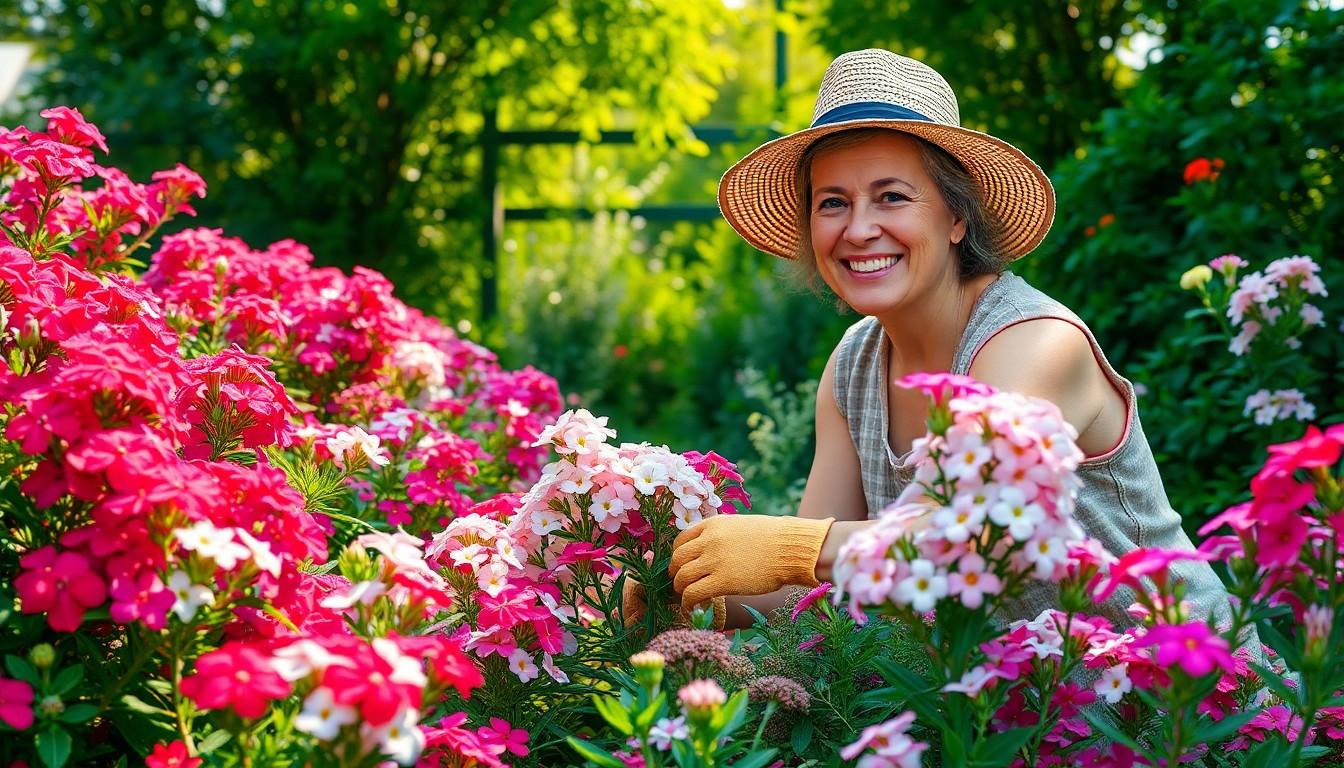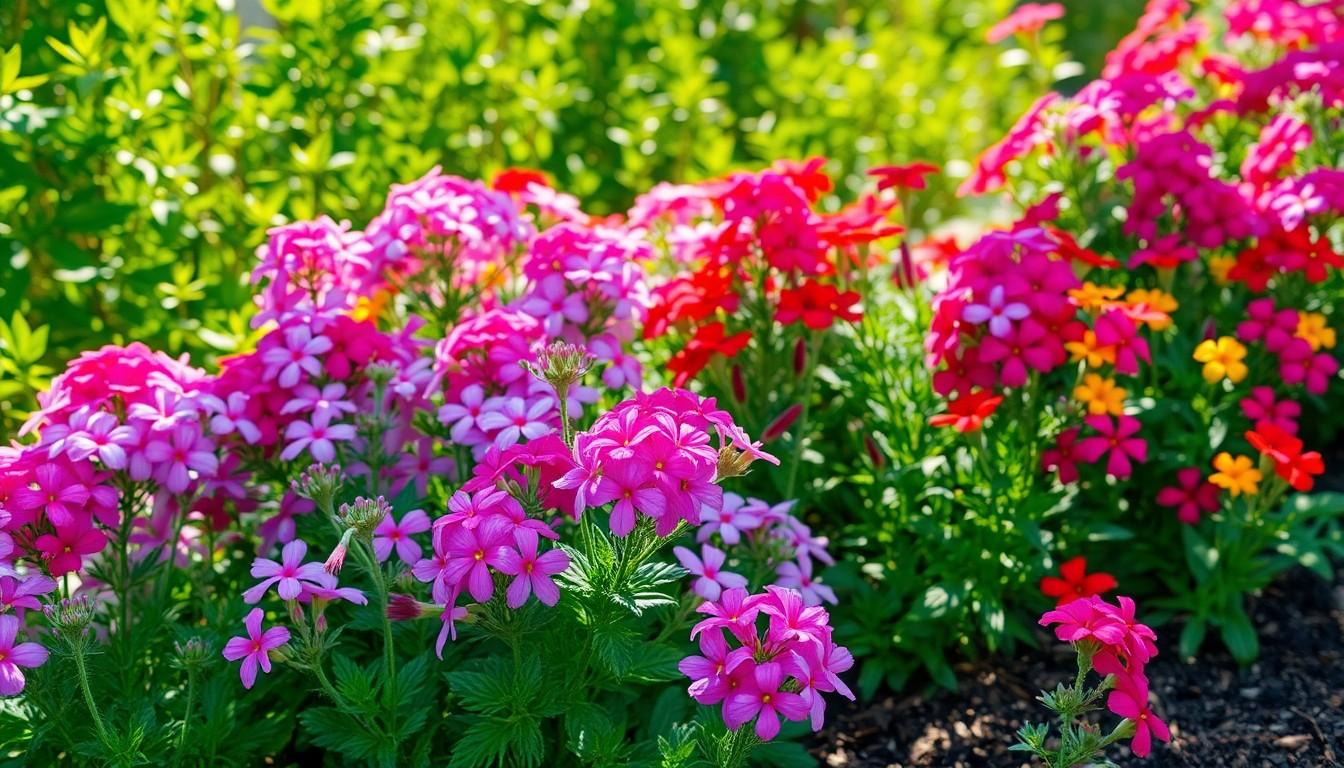Phone:
(701)814-6992
Physical address:
6296 Donnelly Plaza
Ratkeville, Bahamas.

If there’s one flower that knows how to throw a party in your garden, it’s garden phlox. With their vibrant colors and delightful fragrance, these beauties can turn any dull patch of earth into a floral extravaganza. But like any good party host, they need a little TLC to keep the festivities going.
Garden phlox, known for its vibrant blooms, thrives in diverse garden settings. These perennial plants, belonging to the Phlox paniculata species, display clusters of flowers in shades of pink, red, white, and purple. Attractive to pollinators, they often draw butterflies and bees, enhancing the garden’s ecological beauty.
Optimal growth conditions for garden phlox include full sun to partial shade. Soil that drains well and is rich in organic matter provides the best foundation for healthy plants. Deep watering techniques promote robust root systems, supporting plants during dry spells.
Proper pruning techniques ensure the longevity and vitality of garden phlox. Cutting back stems in early spring enhances airflow, reducing disease risks. Additionally, deadheading spent flowers throughout the blooming season encourages continuous blooming, resulting in a more extended display of color.
Common pests like aphids and spider mites may pose threats. Regular monitoring helps identify issues early. Implementing natural remedies, such as insecticidal soap, often mitigates damage without harming beneficial insects.
Fertilization strategies contribute to vibrant growth. Utilizing a balanced fertilizer in early spring gives plants necessary nutrients for robust development. A second application in mid-summer supports ongoing growth and bloom production.
Gardeners often celebrate garden phlox for their resilience and minimal disease issues. They adapt well to various climates and soil types, making them a favorite for both novice and experienced gardeners. With adequate care, garden phlox can thrive for many years, enriching outdoor spaces with color and fragrance.

Providing the right care ensures garden phlox thrives and maintains its vibrant colors. Attention to sunlight, watering, and soil preferences greatly influences growth.
Garden phlox thrives in full sun to partial shade. Ideal conditions involve at least six hours of direct sunlight daily. In regions with intense heat, some afternoon shade offers protection. A balance between sun and shade enhances blooming and prevents stress. Too much shade can lead to weak stems and reduced flowering. Position phlox in a spot where it can receive morning sunlight and filtered afternoon light for optimal performance.
Deep watering supports robust root development. Garden phlox requires about one inch of water weekly, whether from rain or supplemental irrigation. Intense heat may necessitate more frequent watering to maintain moisture. Soil should remain consistently moist, but avoid waterlogged conditions. Early morning is the best time for watering, reducing evaporation losses. Adjust watering according to climate and soil moisture levels to promote healthy growth.
Well-draining soil rich in organic matter proves essential for garden phlox. A slightly acidic to neutral pH level, around 6.0 to 7.0, supports optimal growth. Incorporating compost or aged manure improves soil structure and fertility. Raised beds or mounds enhance drainage, preventing root rot. Soil that retains moisture but drains excess water provides a balanced environment. Regularly testing soil pH ensures ongoing suitability for thriving phlox plants.
Garden phlox faces threats from various pests and diseases that can impact their health and growth.
Aphids appear as small green or black insects on buds and leaves. Spider mites might cause stippling on leaves, often showing fine webs. Thrips, which are slender and tiny, tend to feed on flower petals. Gardeners notice their presence through distorted foliage and flower damage. Observing the undersides of leaves often reveals pest activity. They should act promptly by applying insecticidal soap or neem oil to curb infestations effectively. Regular inspections help spot these pests before significant damage occurs.
Powdery mildew is a common issue, especially in humid environments. Symptoms include white, powdery spots on leaves and stems. Gardeners should ensure adequate air circulation around plants. Root rot can develop in overly saturated soil, leading to sudden wilting and yellowing. To prevent this, proper watering techniques and soil drainage are vital. Fungal infections may also cause dark spots on foliage. Using fungicides when necessary helps control these diseases. Routine monitoring enhances early detection and effective management, promoting healthy garden phlox.
Garden phlox offers numerous advantages for any garden enthusiast. These flowers attract pollinators, such as butterflies and bees, enriching the garden ecosystem. Bright colors of pink, red, white, and purple enhance visual appeal and create vibrant displays. They provide continuous blooms throughout the summer, ensuring a lively garden.
A low-maintenance choice, garden phlox requires minimal intervention once established. Its resilience allows it to thrive in various climates and soil types, making it suitable for different gardening environments. With robust growth and adaptability, this flower complements other plants effortlessly.
The role of garden phlox in improving soil health stands out. It helps support beneficial insects and promotes biodiversity within the garden. Deep-root systems prevent soil erosion while enriching the topsoil over time. This aspect enhances the garden’s overall ecology.
Additionally, growing garden phlox contributes to air quality. As these plants photosynthesize, they release oxygen and filter pollutants, resulting in a healthier environment. Homeowners appreciate the positive impact on their outdoor spaces.
Planting garden phlox also allows for creativity in garden design. Their varied heights and colors enable gardeners to craft stunning arrangements. Mixing phlox with other perennials or annuals creates dynamic visual interest, ensuring that garden spaces remain captivating throughout the seasons.
Garden phlox enhances gardens through its beauty, low maintenance, and ecological benefits. Its ability to attract pollinators, support soil health, and provide aesthetic charm makes it a valuable addition to outdoor spaces. Incorporating this flower into a garden encourages an inviting and thriving environment.
Garden phlox stands out as a vibrant and resilient addition to any garden. With proper care and attention, these flowers not only bring stunning colors and delightful fragrances but also support local ecosystems by attracting pollinators. Their adaptability to different climates and soil types makes them a favorite among gardeners of all levels.
By following the recommended practices for watering, soil management, and pruning, garden phlox can thrive for years, enhancing outdoor spaces with their beauty. Embracing the creativity they offer in garden design allows for captivating arrangements that can transform any landscape. With garden phlox, creating a lively and inviting atmosphere is both achievable and rewarding.